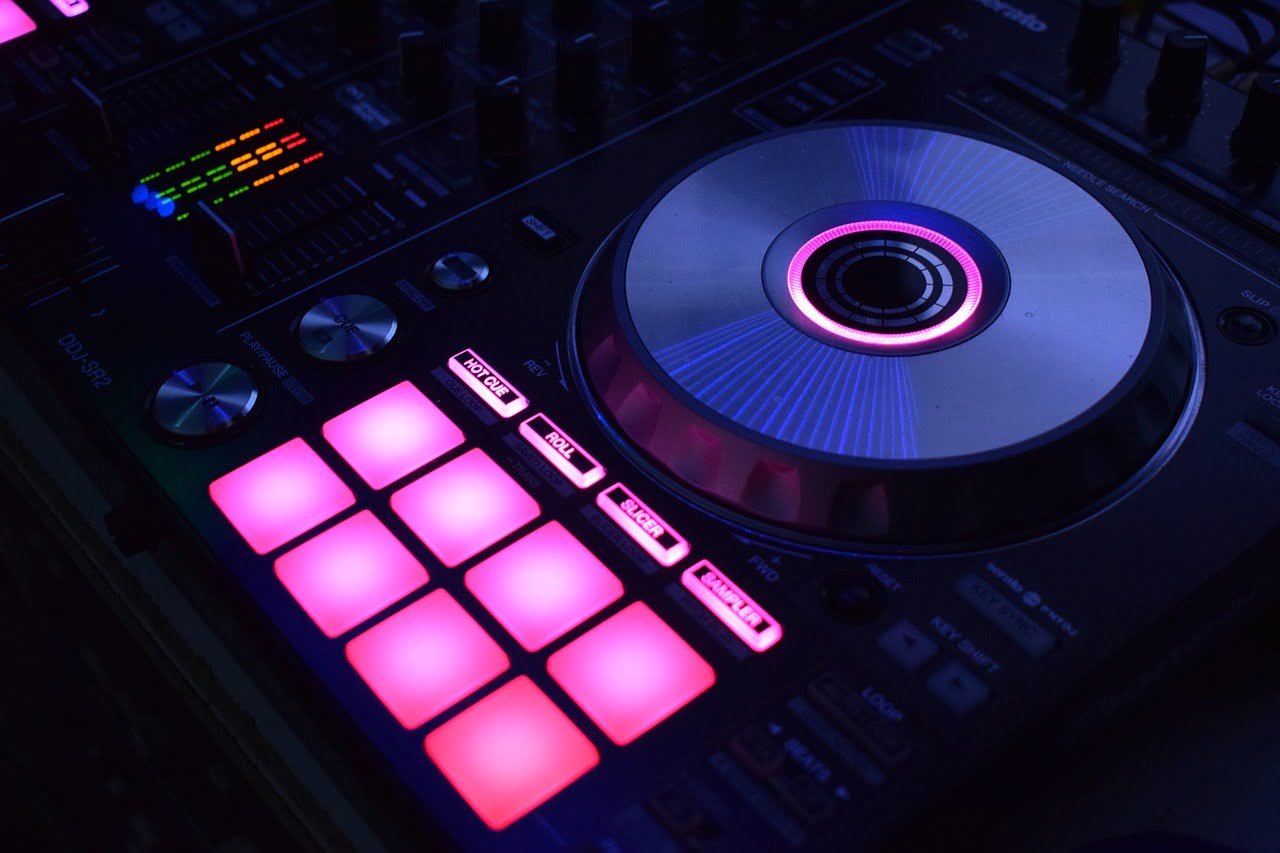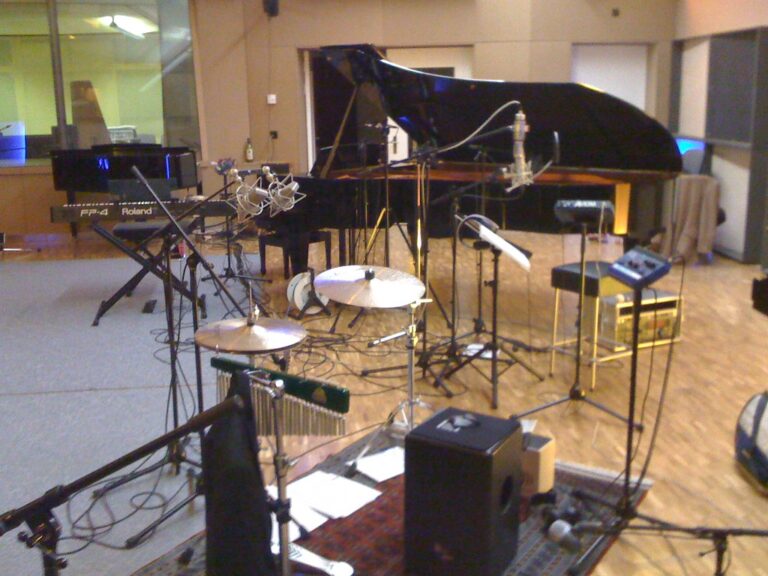Layering Instruments: Building Rich Arrangements in Your Recordings
Hey there! So, you want your recordings to really make an impact, right? You want them to have that extra oomph that sets them apart from the rest. Well, my friend, that's where layering instruments comes into play. By adding multiple instruments to your arrangements, you can create a sound that is not only rich and professional but also grabs the listener's attention from the get-go.
We are supported by our audience. When you purchase through links on our site, we may earn an affiliate commission, at no extra cost for you. Learn more.
In this article, we're going to dive into the world of instrument layering. We'll explore the benefits and techniques that come with it, and we'll even talk about how to choose the right instruments and balance them effectively. Trust me, with these innovative and creative layering techniques, your recordings are going to reach a whole new level.
Imagine your recording as a painting. Now, think of layering instruments as adding different colors and textures to that painting. Each instrument brings its own unique flavor and personality to the mix. Just like a master painter carefully selects their colors, you too will carefully choose the instruments that fit your vision. Want a vibrant and energetic sound? Maybe you'll layer some guitars and a punchy drum kit. Looking for something more mellow and introspective? How about layering some delicate piano and soft strings? The possibilities are endless!
But hold on, my friend, there's more to it than just throwing in a bunch of instruments and hoping for the best. We need to find the right balance. Think of it as a delicate dance, where each instrument takes its turn to shine without overpowering the others. You want your layers to blend seamlessly, like the ingredients in a perfectly crafted dish. Too much of one instrument and it might drown out the others, but too little and it might get lost in the mix. It's all about finding that sweet spot where each instrument complements the others, creating a harmonious and captivating sound.
So, are you ready to take your recordings to the next level? Are you ready to experiment with different instruments, mix and match their sounds, and create arrangements that truly stand out? I know you are! Let's dive into the world of instrument layering and unlock the full potential of your recordings. Get ready to make some magic!
Benefits of Layering Instruments
To create a fuller, more dynamic sound in your recordings, layering instruments offers numerous benefits. By layering multiple instruments, you can achieve a rich and textured arrangement that captivates listeners and sets your music apart. One of the main advantages of layering instruments is the ability to enhance the tonal quality of each individual instrument. For example, if you layer a piano with a synth pad, the piano's natural warmth can be complemented by the synth pad's ethereal qualities, resulting in a harmonious blend of sound. Additionally, layering instruments allows you to create depth and dimension in your recordings. By adding different layers of instruments, you can create a sense of space and provide a more immersive listening experience. Moreover, layering instruments gives you the opportunity to experiment with different combinations and explore innovative sonic possibilities. With each additional layer, you can add complexity and intrigue to your music, elevating it to new heights of creativity and innovation.
Techniques for Layering Instruments
Now let's explore some techniques for layering instruments to further enhance the richness and depth of your recordings. One effective technique is called doubling, which involves recording the same part with two different instruments or using multiple tracks of the same instrument. This creates a thicker, more full-bodied sound. Another technique is called harmonizing, where you add additional instruments playing different notes that complement the main melody. This can create a sense of complexity and depth in your recordings. Additionally, you can experiment with panning instruments to different positions in the stereo field, creating a sense of space and separation. Don't be afraid to try unconventional combinations of instruments to create unique textures and tones. By layering instruments strategically, you can take your recordings to new heights of innovation and creativity.
Choosing the Right Instruments for Layering
When layering instruments for rich arrangements in your recordings, consider selecting the right instruments that complement each other harmonically and timbrally. Harmonic compatibility ensures that the notes played by each instrument blend together smoothly, creating a cohesive and pleasing sound. Timbral compatibility ensures that the different instruments have distinct and complementary tones, adding depth and texture to your arrangements.
To achieve this, experiment with combining instruments from different families, such as strings, woodwinds, brass, and percussion, to create a diverse sonic palette. Consider the unique characteristics of each instrument, such as the warm and expressive sound of a cello or the bright and percussive sound of a trumpet. By combining instruments with contrasting timbres, you can create a dynamic and layered arrangement that captures the listener's attention.
Additionally, pay attention to the range of each instrument. Layering instruments with different ranges can create a fuller and more balanced sound. For example, pairing a high-pitched instrument like a flute with a lower-pitched instrument like a cello can create an interesting interplay between the melodies and harmonies.
When choosing instruments for layering, also consider the role each instrument will play in the arrangement. Think about whether you want a particular instrument to take the lead or provide support. Experiment with different combinations to find the right balance and create a captivating musical experience.
Creating Depth and Texture in Your Arrangements
Enhance the depth and texture of your arrangements by strategically layering instruments with contrasting timbres and harmonies. By carefully selecting instruments that complement each other, you can add a new dimension to your recordings. Consider incorporating instruments with different tonal qualities, such as a warm, rich cello alongside a bright, shimmering flute. This contrast will create a captivating interplay of sounds, capturing the listener's attention and adding complexity to your arrangements.
To further enhance the texture, experiment with harmonies. Layering instruments playing different chords or melodies can create a lush and dynamic sonic landscape. For instance, harmonizing a piano with a guitar can produce a beautiful blend of notes, enriching the overall sound. Don't be afraid to explore unconventional combinations to create unique textures that set your arrangements apart.
Additionally, consider utilizing techniques such as panning and reverb to create a sense of space. By placing instruments at different positions in the stereo field, you can simulate a live performance and add depth to your recordings. Experiment with different reverb settings to achieve the desired ambiance, whether it's a tight, intimate space or a vast, cathedral-like environment.
Achieving a Professional Sound With Instrument Layering
To achieve a professional sound with instrument layering, you can further refine your arrangements by carefully balancing the volume and frequency range of each instrument. By doing so, you can ensure that no single instrument dominates the mix, allowing every element to shine and contribute to the overall sonic landscape. Start by adjusting the volume levels of each instrument, making sure that they are balanced and complement each other. Pay attention to the frequency range as well, ensuring that each instrument occupies its own space and doesn't clash with others. Consider using EQ to cut or boost certain frequencies to create separation and clarity. Experiment with panning to create a wide stereo image, placing different instruments in different positions. Remember, achieving a professional sound requires attention to detail and a willingness to continuously refine and perfect your arrangements.
Tips for Balancing and Coordinating Layered Instruments
To achieve a balanced and coordinated sound with layered instruments, focus on adjusting the volume levels and frequency ranges of each instrument, ensuring they complement each other and contribute to the overall sonic landscape. Start by setting the volume levels of each instrument so that they are balanced and not overpowering one another. Pay attention to the dynamic range of each instrument, making sure that softer instruments are audible and don't get lost in the mix. Next, consider the frequency ranges of each instrument. Ensure that they are not competing for the same sonic space by using EQ to carve out their own frequencies. You can also experiment with panning to create a sense of space and separation between instruments. By carefully balancing and coordinating the layers, you can create a rich and cohesive sound that takes your recordings to the next level.
Conclusion
Congratulations! You've now mastered the art of layering instruments in your recordings. By carefully choosing the right instruments, implementing various techniques, and creating depth and texture in your arrangements, you've achieved a professional sound that is rich and captivating. Remember to always balance and coordinate your layered instruments to ensure a harmonious and cohesive final product. So go ahead, let your creativity flow and create music that will leave your listeners in awe. Happy recording!







